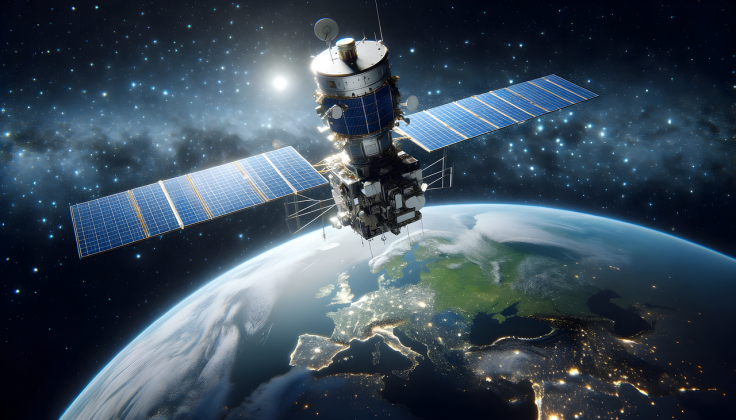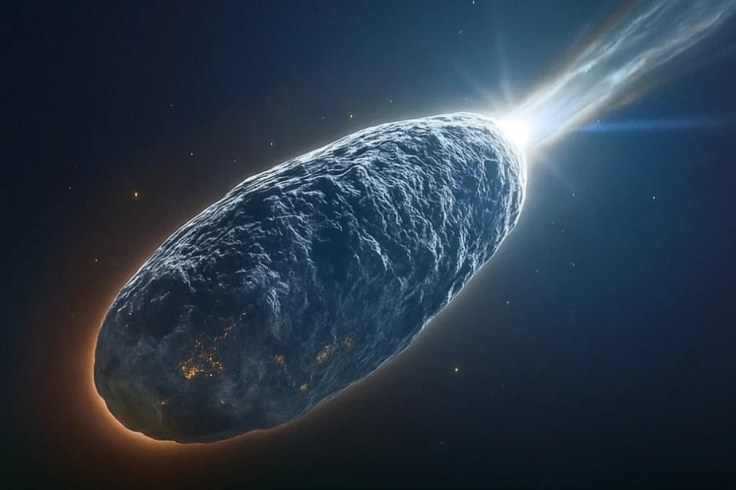NASA Set to Reveal Unprecedented Comet 3I/ATLAS Images That Promise Cosmic Revelations on 19 November

NASA is preparing to release the most detailed images ever captured of interstellar comet 3I/ATLAS, with scientists saying the dataset could fundamentally reshape understanding of how planetary systems form.
According to NASA's official announcement, the long-awaited imagery gathered by the Hubble Space Telescope and several other missions will be unveiled during a live global broadcast on November 19 at 3 PM EST.
3I/ATLAS, the third confirmed interstellar object to enter our solar system after ʻOumuamua and Comet Borisov, has already captured worldwide attention for its unusual composition and behaviour.
NASA says the upcoming reveal will include high-resolution images, animations, fragmentation sequences, and dust-trail mapping, which offer the clearest look yet at this rare visitor from another star.
A Historic Look at an Interstellar Comet
Unlike comets originating in the Kuiper Belt or Oort Cloud, 3I/ATLAS formed around a distant star before it was ejected into interstellar space. NASA scientists say the object's hyperbolic trajectory confirms its extrasolar origin, while its volatile-rich composition may provide direct clues about the building blocks of exoplanets.
In July 2025, when 3I/ATLAS was 277 million miles from Earth, Hubble captured what the agency describes as one of the most striking comet images ever obtained. The observations revealed fragmentation patterns and a teardrop-shaped gaseous cocoon, unlike those of typical solar-system comets.

What NASA Will Reveal on 19 November
NASA has confirmed that the broadcast will include:
• High-resolution stills from Hubble, supplemented by ground-based telescopes
• Animations of fragmentation events, dust emission and tail formation
• Visuals captured during the comet's closest approach to Mars in October 2025
• Expert commentary from the Goddard Space Flight Centre
• A discussion about future missions aimed at intercepting interstellar objects
The images were delayed earlier this year during a federal shutdown, prompting public speculation. Acting NASA Administrator Sean Duffy said the postponement was due to manpower shortages, not secrecy, and insisted that the images would be released only after a thorough scientific review.
The agency confirmed that the images will be unveiled during a live event at 3:00 PM EST (2000 GMT) on Wednesday, 19 November. The event will be streamed live via NASA's channels, including NASA+, the NASA app, the agency's website, the YouTube channel, Amazon Prime Video, and partner platforms such as Space.com.
Scientific Stakes: Why 3I/ATLAS Matters
Researchers believe 3I/ATLAS may reveal how common or rare particular ices, metals and organics are among exoplanetary systems. Harvard astrophysicist Avi Loeb has highlighted more than a dozen irregularities in the comet, suggesting it may not follow the same evolutionary path as typical comets in our solar system.
While some online commentators have made sensational claims, mainstream astronomers emphasise the need for measured analysis. The structure of the coma, its unexpected dust behaviour and its fragmentation patterns may help refine long-standing models of comet physics and early planetary formation.
Public Anticipation and Global Interest
The upcoming reveal has already generated intense interest on social media, with the #3IATLAS tag surpassing the event. Astronomy forums and science blogs have speculated about what the high-resolution imagery might show, particularly after Mashable reported that the dataset includes rare close-approach imagery from Mars-orbiting instruments.
NASA hopes the release will energise public interest in planetary science and underscore the importance of monitoring interstellar visitors, which may one day offer both risks and opportunities.
Despite the speculation, the upcoming broadcast is expected to reaffirm NASA's commitment to transparency and public engagement. The event offers the public a unique opportunity to witness cutting-edge science in real time.
© Copyright IBTimes 2025. All rights reserved.



















